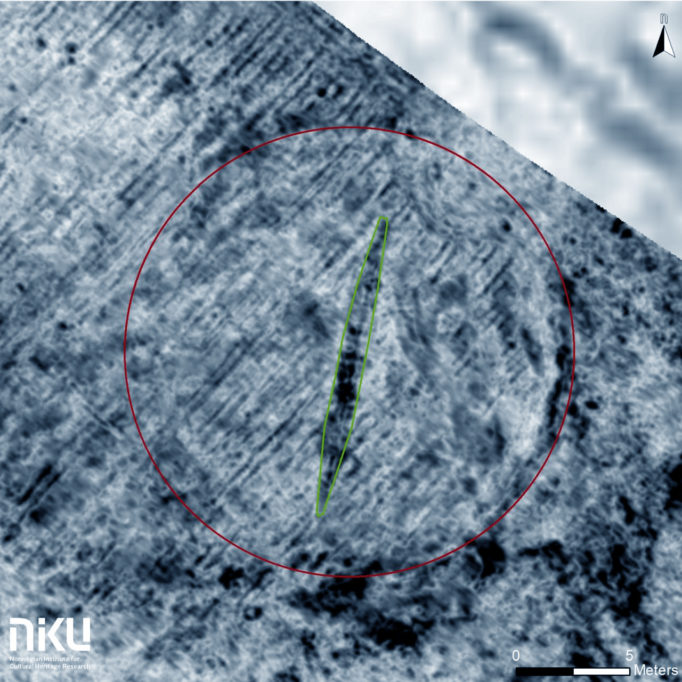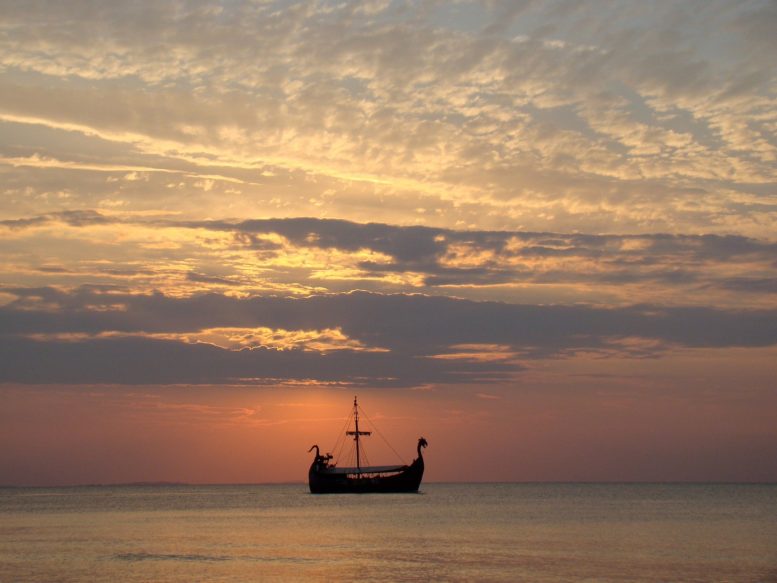Archaeologists of the Norwegian Institute for Cultural Heritage Research (NIKU) have discovered a new ship burial site –by sheer luck– using new georadar technology that dates the find back to the Viking or Merovingian eras.
The remains of the ship are located just below the surface within what was once a burial mound, making the ship most likely a Viking funeral ship buried under Norwegian farmland, on the island of Edøya, in Møre, western Norway, just yards from a medieval Edøy Church. Based on radar imaging, the mound appears as a circle about 18.29 meters (60 feet) wide. At the center of the mound, archaeologists detected a 13-meter (43-feet) long-keel, traces of the sterns at both ends of the vessel, and the first few strakes or lines of planking.

The ship-like structure was detected under the surface of a Norwegian paddock. Photo Credit: Manuel Gabler, NIKU
The archaeological survey used large-scale, high-resolution georadar scans with technology developed by LBI ArchPro, NIKU, and Guideline Geo. The archeologists had been conducting a survey in Smøla, a small coastal island outside Trondheim. They decided to explore further and found traces of the buried ship in a field outside of the planned study area. “We had actually finished the agreed-upon area, but we had time to spare and decided to do a quick survey over another field. It turned out to be a good decision,” Dr. Manuel Gabler said in an NIKU statement.
Dr. Knut Paasche, Head, Department of Digital Archaeology, NIKU said, “Again, it’s the technology that helps us find yet another ship. As the technology is making leaps forward, we are learning more and more about our past. We only know of three well-preserved Viking ship burials in Norway, and these were excavated a long time ago. This new ship will certainly be of great historical significance.”
According to NIKU Head Dr. Paasche, the length of the keel indicates that the ship may have been up to 16.76 meters (55 feet) long, as there may have been some damage caused by farming activities. While more investigation and examination with non-invasive methods will be required to determine its exact age, Dr. Paasche believes that based on current evidence, it may be from either the Merovingian or Viking Period, thus, could be more than 1,000 years old. Despite the shallowness of the burial mound, making the ship vulnerable to human-activity damage, the ship appears to be relatively well-preserved.
The ship would have likely been dragged onshore from the nearby Oslo fjord. At some point during the Viking Age, it was the final resting place of someone powerful. It is believed that the larger the ship and mound, the more important the burial. “Ships like this functioned as a coffin,” said Dr. Paasche. “There was one king or queen or local chieftain on board.”
The 2019 discovery is similar to the 2018 discovery, where a 20-meter long (65.62 feet) ship was found 50 centimeters (1.64 feet) underground in Viksletta, Norway right next to a busy freeway.
References:
References:
- “Norwegian Researchers Find Viking Boat Burial Site,” The Maritime Executive, 25-November-2019.
- “Remains of Viking ship found in Norwegian paddock under lost burial mound,” 27-November-2019.
